John Maeda, Sketch 0000574 / Nature Series, NFT
John Maeda: A pioneer of digital art
Designer and technologist John Maeda has dropped his inaugural NFT, a sketch created in preparation for his show at the Cartier Foundation.
John Maeda (b.1966) describes himself as an “American technologist and product experience leader”. However, looking back at his impressive career, Maeda could be described as a Renaissance man for the digital era — he has been a graphic designer, artist, computer scientist, professor, Chief Customer Experience Officer, CEO and more. The driving force of his career has been his interest in design, specifically the meeting point of design and technology. Wired Magazine wrote, “Maeda is to design what Warren Buffett is to finance.” As an artist, John Maeda helped redefine computer programming as a tool for artistic expression. His work is in the permanent collections of the Museum of Modern Art, the San Francisco Museum of Modern Art and the Cartier Foundation in Paris.
John Maeda’s inaugural NFT was minted on June 28 in exclusive partnership with Verisart and SuperRare as part of 8×8: 8 genesis NFTs by 8 major artists working with AI, code and digital technologies. Bidding closes around 12pm EDT July 1.
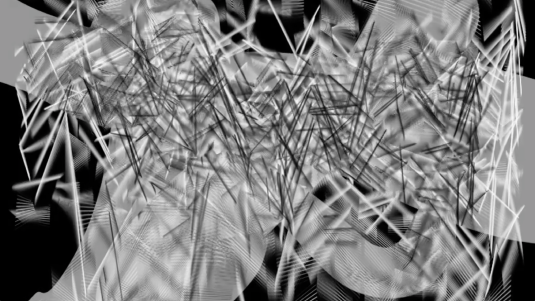
As an artist, John Maeda was a pioneer in the field of digital art. After completing his bachelor’s and master’s degrees at MIT, Maeda went to study at Tsukuba University’s Institute of Art and Design in Japan where he completed a Ph.D. in design. He went on to become an MIT research professor in computational design and recipient of the White House’s National Design Award.
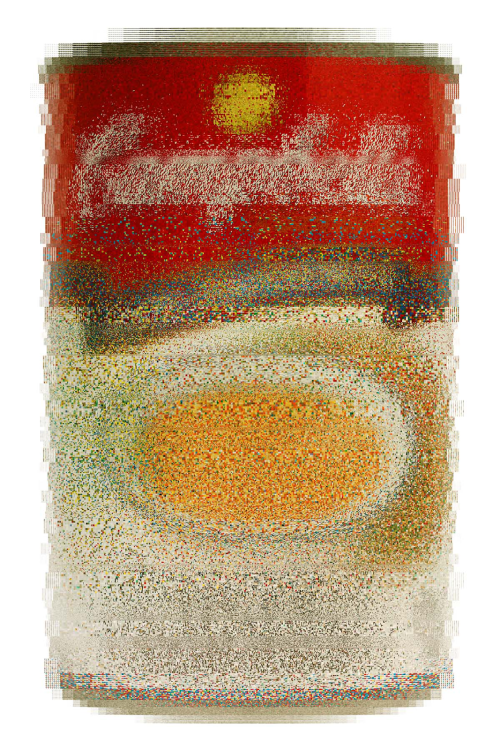
His artistic practice combined both his computational and design skills, developing new mediums for artistic expression. Maeda’s use of electronic media as a tool for art-making by combining computer programming with traditional artistic techniques laid the groundwork for the interactive motion graphics that are commonplace on the web today.
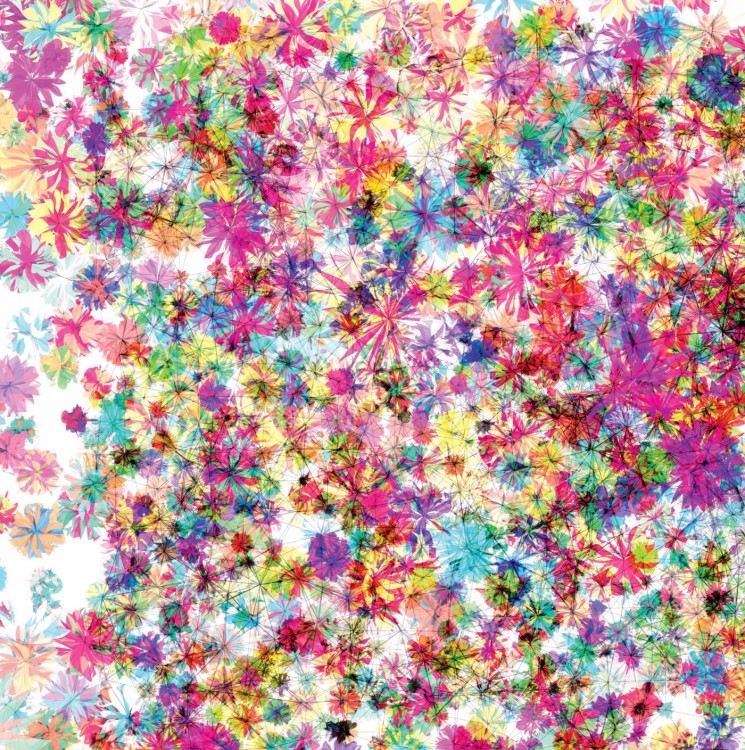
Many of his works explore human existence in the digital age, our interactions with technology, and how our lives are changing. In his 2007 exhibition MAEDA:MySPACE at Riflemaker, he used a live MySpace page to question the tech-dense and often passive online landscape. First live in the gallery, and then from his home in the US, the artist investigated ideas of repetition and ‘reduction’ which he discussed in his book The Laws of Simplicity (MIT Press, 2006).

Visitors interacted with a roomful of pods, texts and films, where Maeda presented possibilities for a ‘simpler’ life. Maeda explored our frantic interactive ‘life’ and how it might evolve in the future.
At his second show at Riflemaker in 2010, John Maeda is The Fortune Cookie, Maeda explored how we communicate, asking visitors to choose methods of ‘channeling’, from sending a text or Tweeting to Maeda drawing in the sand of his box or writing a message on the glass window with his finger in his own breath.
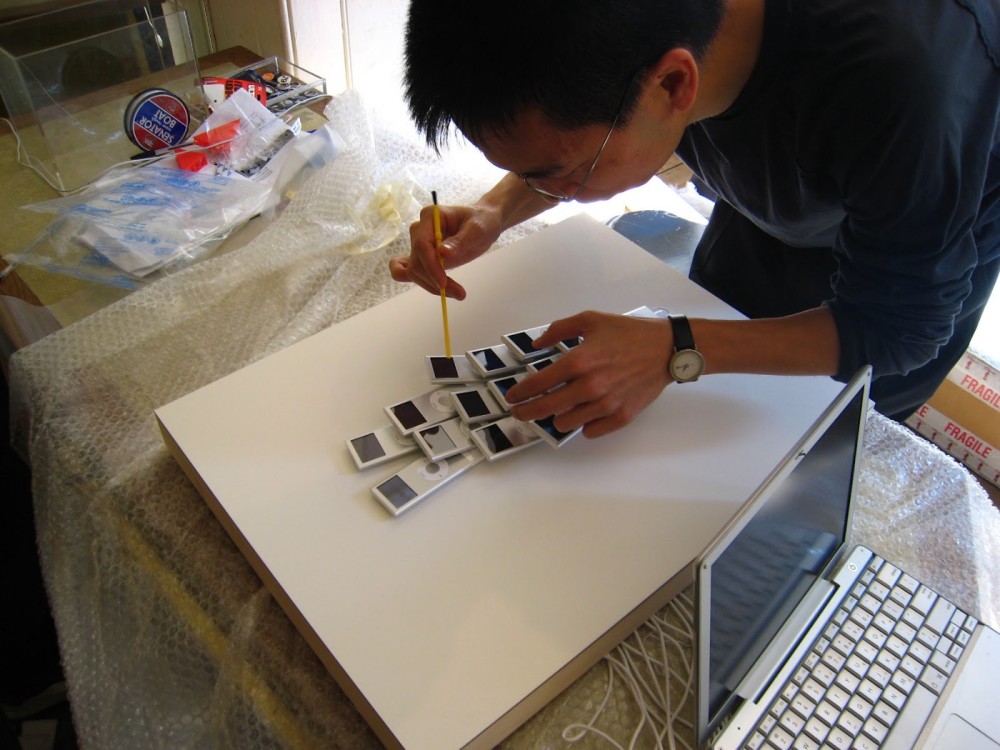
Sketch 0000574 / Nature Series
John Maeda’s inaugural NFT, Sketch 0000574 / Nature Series, is taken from a series of early sketches that led to his 2005 one-man show at Fondation Cartier.
“The NFT market interests me”, Maeda explains, “because it provides an opportunity to share my snippets from the past in a manner that echoes the finite universe of traditional physical art — knowing that it contradicts the very nature of computation: which is grounded in infinity.”
Detailing how the work was created, Maeda says, “Much of my work in the nineties involved experimenting with math and human motion — back when computers were terribly underpowered. So it required me to make new technologies that went beyond what was available at the time.”

“It was rendered on a network of ten Mac minis that once sat atop my desk as a ‘miniature render farm.’ It ran custom software I’d written to turn my pencil sketches into animations that would take an entire evening to generate.”
Maeda’s Nature exhibition at Fondation Cartier was his first solo show in Europe. He presented a series of “motion paintings”, digital landscapes of abstract forms reminiscent of natural phenomena. It explored the organic qualities of computational creativity in an attempt to bring us closer to the “nature within the computer”.
John Maeda’s inaugural NFT is certified by Verisart, an award-winning blockchain certification platform. Designed to empower artists to tell the story of their work, the digital certificates include additional images, videos and documents. For collectors, Verisart’s patent-pending Certificates of Authenticity (COA) form an integral part of collecting NFTs. They provide confidence in the identity of the artist and the verified history of the artwork.
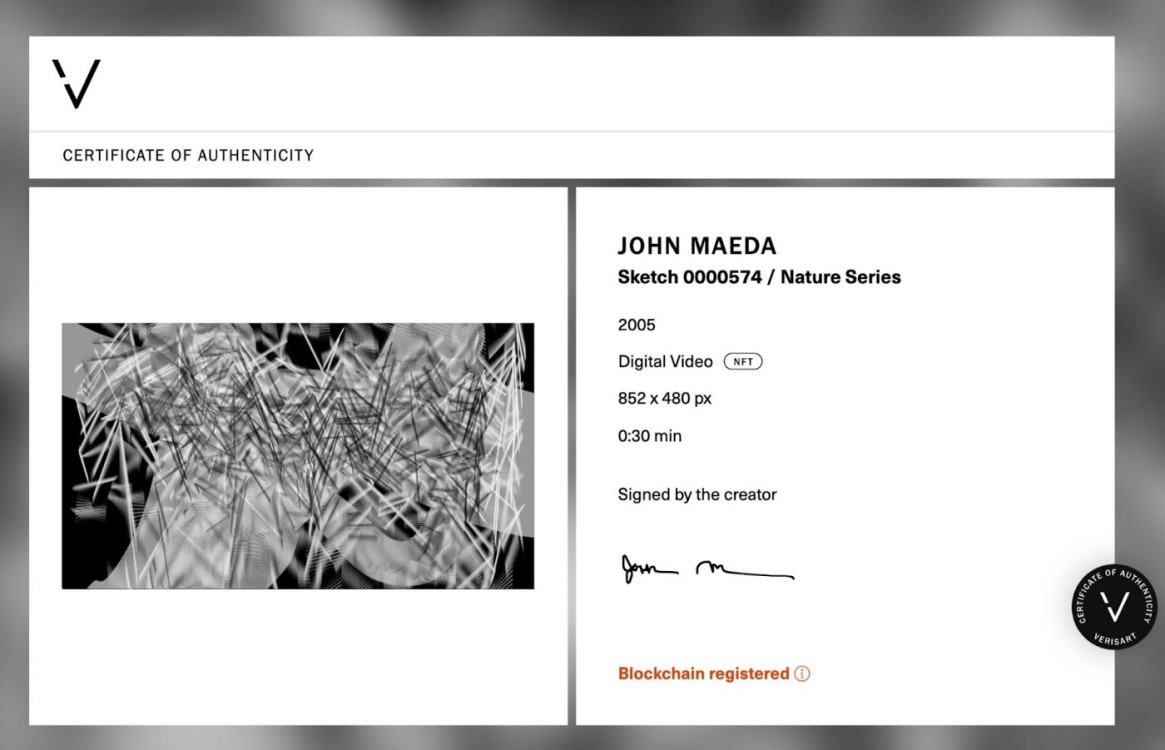
For Maeda, improving the quality of media art and design necessitates an educational infrastructure in arts and technology schools to shape strong, cross-disciplinary individuals. He created the project ‘Design by Numbers’ while at MIT to provide visual designers and artists with an introduction to computational design.
John Maeda also launched the STEM to STEAM initiative. Design and design thinking are important tools for creative problem solving, communicating scientific discoveries and encouraging interdisciplinary partnerships. STEAM represents the economic progress and breakthrough innovation that comes from adding art and design to STEM (Science, Technology, Engineering and Math) education and research: STEM + Art = STEAM.
John Maeda paved the way for the many artists who are now embracing code and technology as a medium for artistic expression and pushing the boundaries of art. Maeda continues to champion and shape design and technology through his career, books and talks.
About the artist
American technologist and product experience leader bridging business, engineering, design via working inclusively. SVP Chief Customer Experience Officer at Everbridge working on the future of Critical Event Management technologies for saving lives and keeping businesses and society running. #safetyeatstheworld
MIT-trained computer scientist, both risk manager (MBA effect) and risk-taker (learner effect), and seasoned for-profit/non-profit growth executive. Author of five books including the new How To Speak Machine and the bestselling Laws of Simplicity. Recently EVP/CXO of IT consultancy Publicis Sapient serving digital transformation needs globally across industries plus FED/SLED with the LEAD (Light, Ethical, Accessible, Dataful) system. Board of Directors at Sonos and the Smithsonian Design Museum, former President/CEO of Rhode Island School of Design and Partner at Kleiner Perkins venture capital in Silicon Valley. He has appeared as a speaker all over the world, from Davos to Beijing to São Paulo to New York, and his talks for TED have received millions of views.
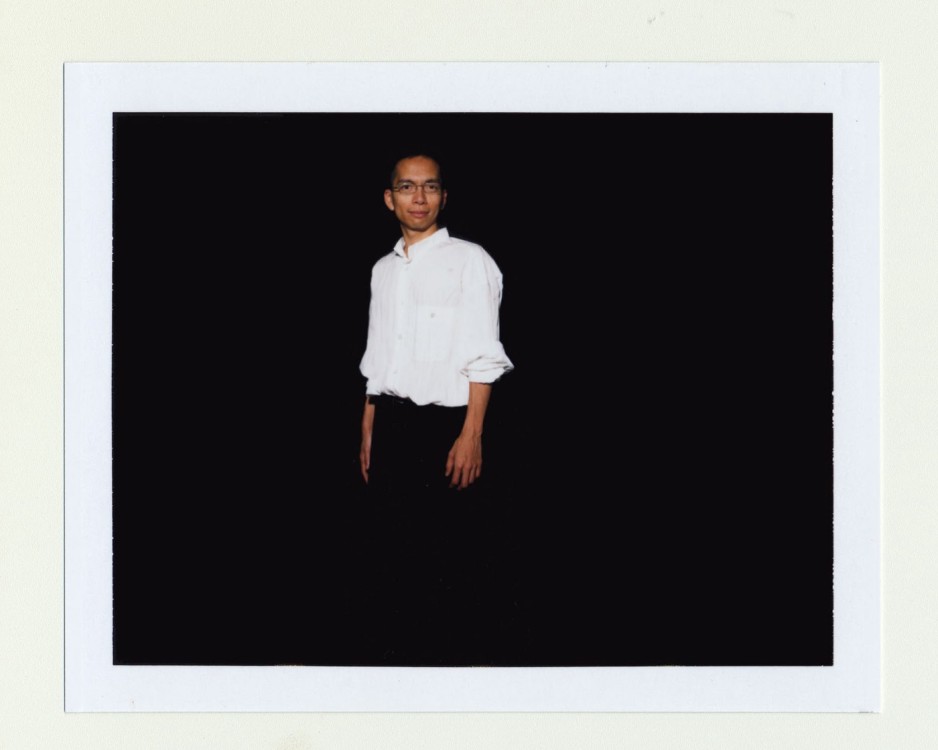
Bidding for John Maeda’s inaugural NFT, Sketch 0000574 / Nature Series, closes at 12pm EDT on July 1.